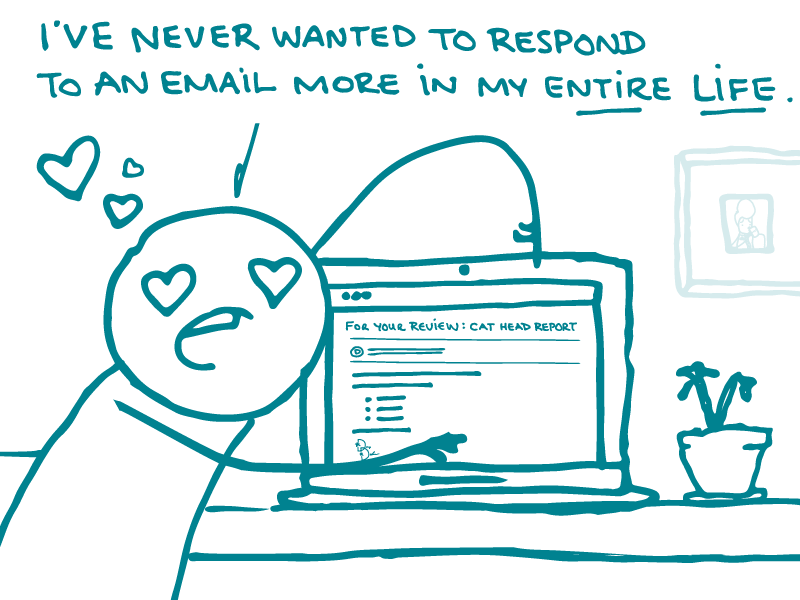
Here at We ❤ Health Literacy Headquarters, we talk a lot about ways to communicate clearly. Usually, we’re talking about communicating health information to consumers. But sometimes, we like to explore how to apply the principles of health literacy to interactions in our very own workplaces.
In the first edition of Health Literacy in the Wild, we discussed giving clear feedback. This week, we’re tackling a common kind of communication that can also benefit from our best practices: email.
If you’re like us, dear readers, you spend a big chunk of your workday writing and reading (and occasionally ignoring) emails. To write emails that people will actually read and respond to, start by asking yourself these questions:
- What do I want this person to do? For example, if you need a colleague to review a document, plan to make a clear ask. Being specific about what you want will help you get what you need.
- Is email the right tool for the job? Sometimes, picking up the phone or sending an IM is a better way to communicate. This may be especially true if you need to discuss something sensitive or complicated.
When you’ve decided an email is the way to go, use these tips to write it:
- Make the most of your subject line. Write a brief, descriptive subject line. Want your reader to do something? Say it in the subject line — for example, “For your review: Awesome health literacy-related thingy.”
- Get right to the point. Say what you need in the first few lines of your message. Want a response by a certain date? Need an answer to a question? Take a hint from the health literacy playbook and put the most important information first.
- Keep it short. Stick with short sentences and short paragraphs (3 to 5 sentences max). If you’re struggling to write the email because you have so much to say, think about picking up the phone or setting up a meeting instead.
- Use bulleted lists. Don’t send a wall of text. If you need to include lots of details, list them out. This organizes the information so your reader can easily skim what you want them to know.
- It’s okay to repeat yourself. We empower you to repeat important phone numbers, dates, and times — ‘cause, you know, attention spans. (Pro tip: Consider bolding key elements for emphasis.)
- Take the time to proofread. Before you hit send, read your email all the way through. Check for typos or confusing sentences. Think about your tone, too — if your reader could misinterpret your intent or emotions, take the time to rephrase.
The bottom line: Put your health literacy skills to work when writing emails. Your colleagues will thank you!
Browse recent posts